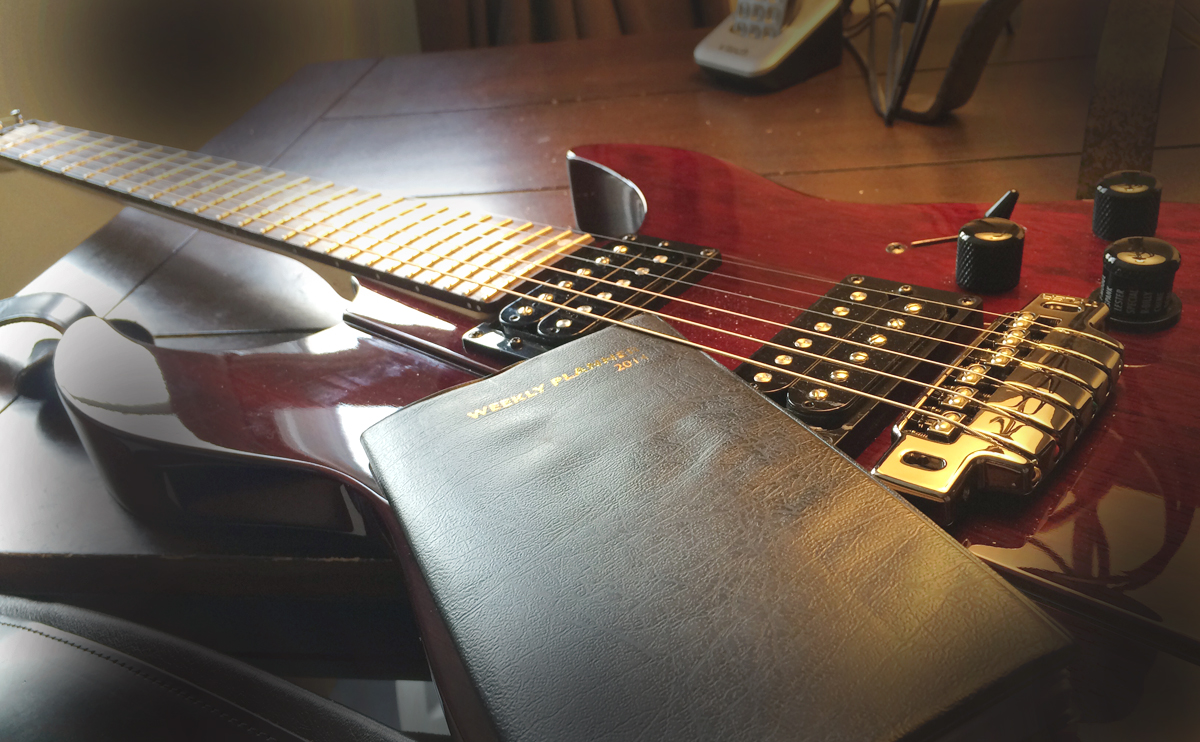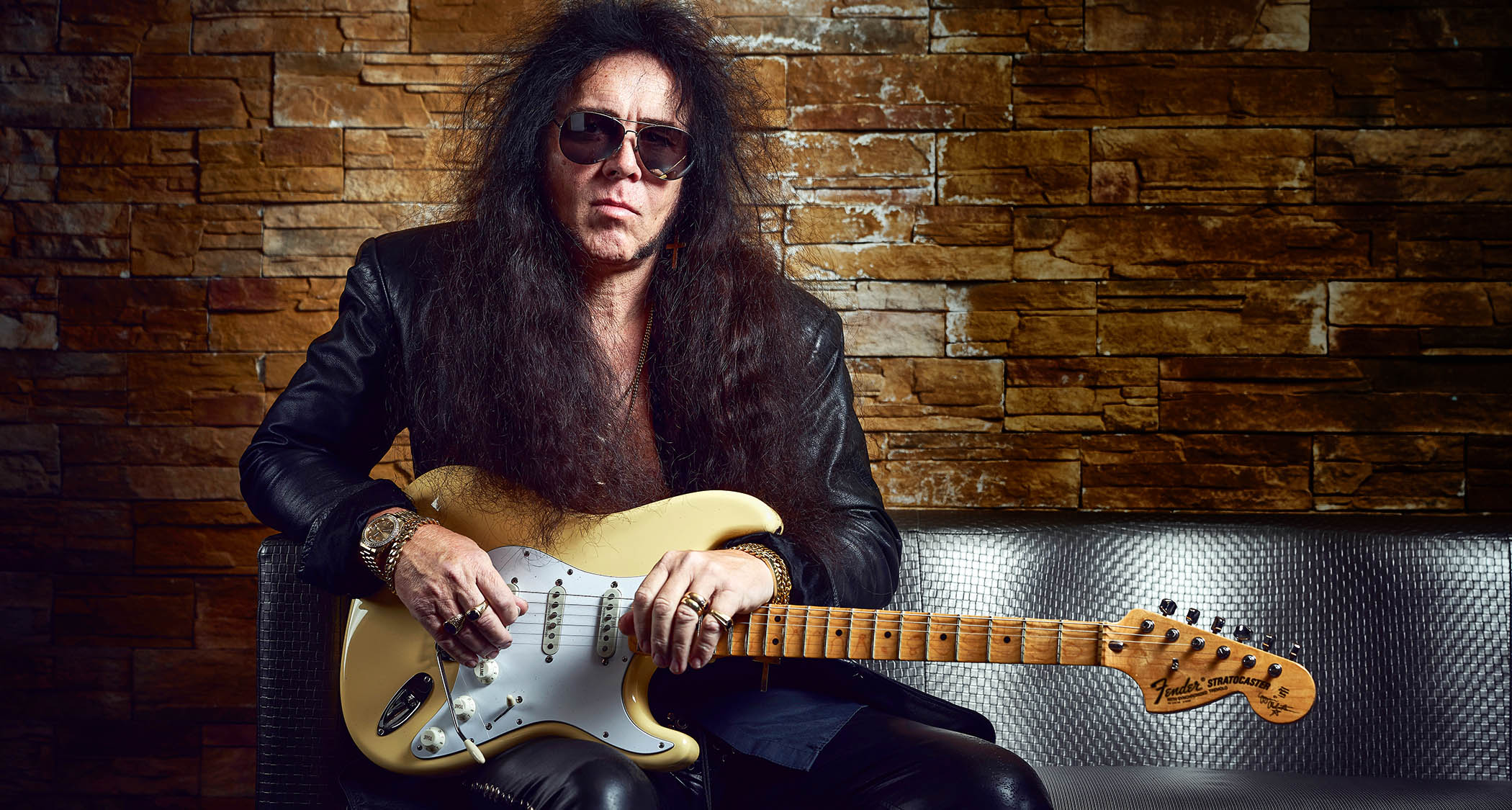Session Guitar: Another Day in the Studio

Greetings!
I thought I would do another blog about a typical day in the studio. I'll be describing, in very quick detail, all of my thoughts, actions and concerns on making it through the day.
I start every day practicing — at least two hours. Especially since I'm trying to start a new career as a guitarist as opposed to a studio guitarist. It seems most of my time in the studio these days is spent playing very simple parts or having my hand on a mouse! That's not a good way to keep your chops up, or more importantly, to grow musically!
That is priority number 1.
I look at my schedule, check my email and Facebook to see who has sent in a project or who needs to discuss a project. I'll get my day in order and line up any phone calls or Skype calls and get to work.
Two country songs are in need of solos and ear candy. Earlier, I had done the basic tracks with acoustic guitars, and now the vocals have been added. I like to hear the vocals before soloing; it's always nice to know the song's emotion. That way, if it's a hatred thing, I can solo nasty! Or if it's a love song, I can be sweet and tender.
My guitar choice for country is a no-brainer — the Line 6 JTV-89! Why not a Tele or a Les Paul? Both seem to be typical country/pop guitars today. Here's why: I don't own a Tele! I never found one I liked to play. But I love my JTV. It feels like a hot rod, models a Tele perfectly, and I can actually play it well. I choose that for my solos. For the different parts, I just switch the dial to the Les Paul model on the Variax. No time wasted! The Les Paul is my favorite model on the JTV — position 5. I use it for sweet extra lines to float through the pre-chorus and choruses.
Get The Pick Newsletter
All the latest guitar news, interviews, lessons, reviews, deals and more, direct to your inbox!
After listening back, I realize both songs can benefit from a bit of Rickenbacker-like 12-string chimey strums. Simple. Switch to the 12-string Rick model, transpose the key using the virtual capo, use a different voicing to add this color to the second verse and bridges. By the way, I used my Line 6 DT-25 into a 2x12 Laney cabinet. I chose "amp 1" for the cleaner sounds and "amp 4" for the dirty lead sounds, adjusting the gain and tone to suit, all done in less than two hours.
Next I take these songs and do a rough mix of each to send out. I also include end-to-end WAV files in 44.1-24-bit stereo waves of each track. I send them affected and dry. I NEVER send direct guitar parts for someone else to decide what sound to use. I know this has become a standard industry practice, but what the fuck? I mean they hire us for our playing and our style, and a big part of that is my sound. It is my voice! I am in complete disagreement with this and would turn down the work before I let another person re-amp or remodel my playing and turn it into garbage. Yes, this has happened to me. Never again. I'll lose the money and future work before I do. Just say no!
My next job is to play a metal solo on a dance track! I just knew I'd need my Ibanez RG 2550. The main reason? The whammy bar. I knew this solo, by its very nature, would be a caricature of a metal solo, so all the typical elements needed to be represented. I'm not a metal player, but in my world, I know I can be anything for 16 bars.
For the amp, I chose the HD500 Line 6 floor board. I love the dual amp modeling and the Treadplate models are over- the-top with sustain and tone when combined with almost any one of the distortion boxes included. I like to set it up with a Tube Screamer or Tube Drive. This solo takes me some time: three hours. I want it to be aggressive and melodic. I literally setup six tracks for the solo! I know that there is no way I am going to be able to do all the different styles in one shot. Maybe after it is done I could relearn it and play it again, but why bother? It's done. I play a few bars till I am happy, then move on to a new track. When I am happy I cross fade the end of one into the other. It is seemless and I sound like a god. But I am not a guitar god! I am a studio guitarist.
After the solo is completed I go and double some lines and harmonize a few others. Repeat the ritual of doing a rough mix. Then doing the dry and effected wave files to be sent out. I use DropBox or HighTail for my transfers.
Enough for one day. It's time to work on my music again. Summer is almost here, so I'll be putting up a new song — "Simmer" — on my website. If you get a chance, take a listen. Many of the same elements used in this blog were used on that song.
Till next time …
Ron Zabrocki is a session guitarist from New York, now living in Connecticut. Says Ron: "I started playing at age 6, sight reading right off the bat. That’s how I was taught, so I just thought everyone started that way. I could sight read anything within a few years, and that helped me become a session guy later in life. I took lessons from anyone I could find and had some wonderful instructors, including John Scofield, Joe Pass and Alan DeMausse. I’ve played several jingle sessions (and have written a few along the way). I’ve “ghosted” for a few people who shall remain nameless, but they get the credit and I get the money! I’ve played sessions in every style, from pop to jazz.
“There’d been three-minute solos, which were just ridiculous – and knackering to play live!” Stoner-doom merchants Sergeant Thunderhoof may have toned down the self-indulgence, but their 10-minute epics still get medieval on your eardrums
“There’s a slight latency in there. You can’t be super-accurate”: Yngwie Malmsteen names the guitar picks that don’t work for shred










